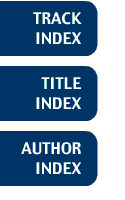
Track: Business Geographics
Integrating GIS into the Retailing Process: The Case of Richard-Robitaille Furs
Jan WarnkeHow can a small, traditional fur retailing business keep up with the big ones in a very competitive market? This paper describes how GIS was used to increase the competitive edge of a small Quebec City fur retailing company that decided to integrate new information technology into its retailing process. With an established aging and eroding client base, Richard-Robitaille Furs decided to abandon traditional marketing strategies and focus on client retention and attraction. Mining the client database provided sufficient information to geocode their best clients for the major services provided by the company: fur storage, repairs, remodeling, and sales. Client postal code data were overlaid with census tract level data to identify the major demographic components of their client clusters. The resulting analysis allowed the targeting of the best client regions for personalized direct mail promotions to 1,500 clients. The identification of the demographic profile of the client clusters also facilitated targeting 12,000 potential customers for mail promotions. By consolidating their active client base and focusing on selected potential clients the industry expects to increase its market share by 15 percent in the next two years. The integration of a geographically referenced client database changed the way the company went about making their business decisions. The careful monitoring of changes in client characteristics by using standardized reports and periodic analysis of geographically referenced data has prepared the company to face the marketing challenges of the new millennium.
Jan Warnke
JW COMM INC.
330 rue diAiguillon
QC, G1R 1M3
CANADA
Telephone: 418-525-9690
Fax: 414-688-3273
E-mail: jwarnke@total.net